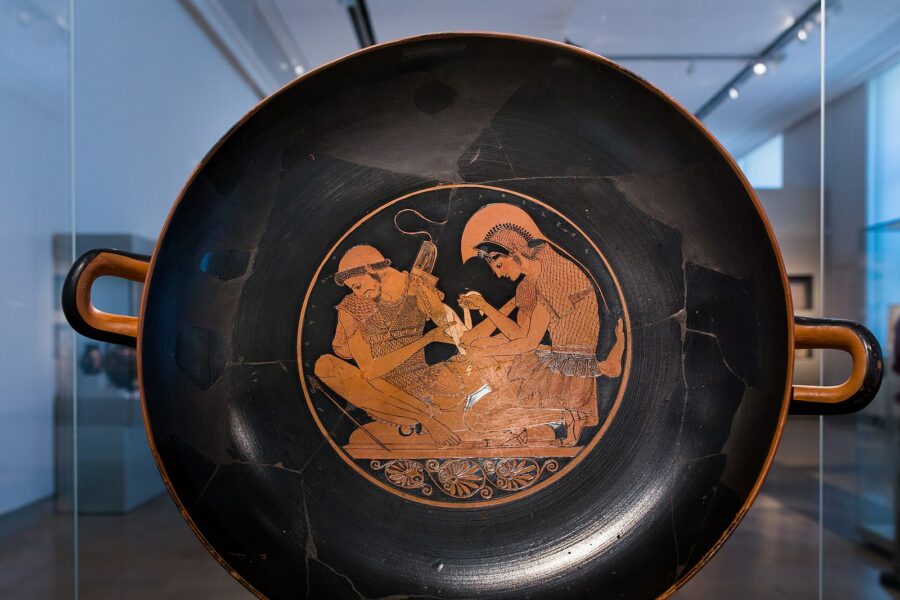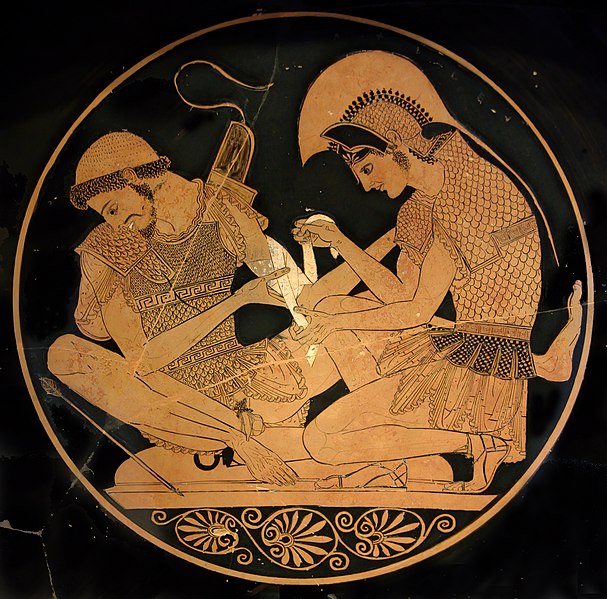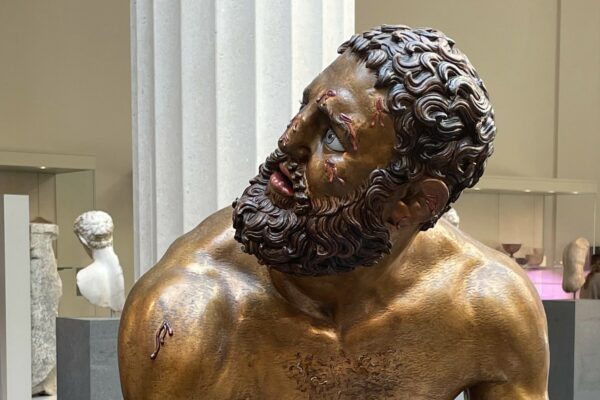
Acquisition no. 5: A museum information sign for a pot showing Achilles and Patroclus hanging out, bandaging each other’s wounds, as one does.
Social media is full of series that feature the greatest works of ancient art. This is not one of those series. This is Honest Museum Signs, a series devoted to the belief that with ancient artifacts, as with everything else, “they can’t all be winners.” Here we plumb the bottom of the ancient barrel to present artistic oops-i-daisies, along with the honest museum information that reflects what archaeologists are really thinking when they analyze these misfires.

Goshdarnit, man, I’m a warrior, not a doctor!
This is a pot. It is supposed to show Achilles, the greatest warrior of all time, playing doctor with his companion Patroclus. What it actually shows looks like a heavily armored game of Twister. Patroclus looks as if he is balancing his foot against the edge of the picture, but since such edge does not exist for his character, he’s apparently just sticking his foot in the air. This position in turn opens his groin area to reveal…well, whatever it is, it’s not great. Achilles looks pretty pleased with his bandaging work, although how his wrapping pattern eventually could lead to a knot, and thus any medical purpose, is unclear. Sosias has shown him with his helmet’s protective cheek flaps raised, which makes him look like a donkey. Hipster-beard Patroclus has removed his own helmet and is wearing only the leather skull cap that protected the crown of the head and probably stunk like a gym bag. The snaky thing over his shoulder is his quiver, with the cap open and strap flailing to show he is all out of arrows. This is meant to be heroic, but combined with the arrow at his knee, opens the door to the interpretation that he shot himself in the arm somehow.
The ancient author of The Iliad, Homer, said nothing about the nature of the relationship between Achilles and Patroclus, presumably not realizing that by doing so, he would spark 2500+ years of fan fiction shipping or un-shipping these two. This pot’s composition could be referencing ambiguity in their relationship, or it could have resulted from the artist panicking as he realized he had no idea where he was going with this thing. This pot’s artist, Sosias, clearly thought “I’m going to do a complex arrangement balancing the contrasts between the highly-patterned armor and the plainly-rendered limbs.” But this was a cheque his skills could not cash.
Photo credit: Bibi Saint-Pol, via Wikimedia Commons.
For more exploits of the Greek gods, and how their myths shaped Ancient Greek and modern societies, enroll in CLAS C205 Classical Mythology, coming up in Spring 2023, and earn GEC credits while you’re at it! Can’t get enough of Ancient Greece and Rome? Earn a Classics Minor in just 15 credits!


